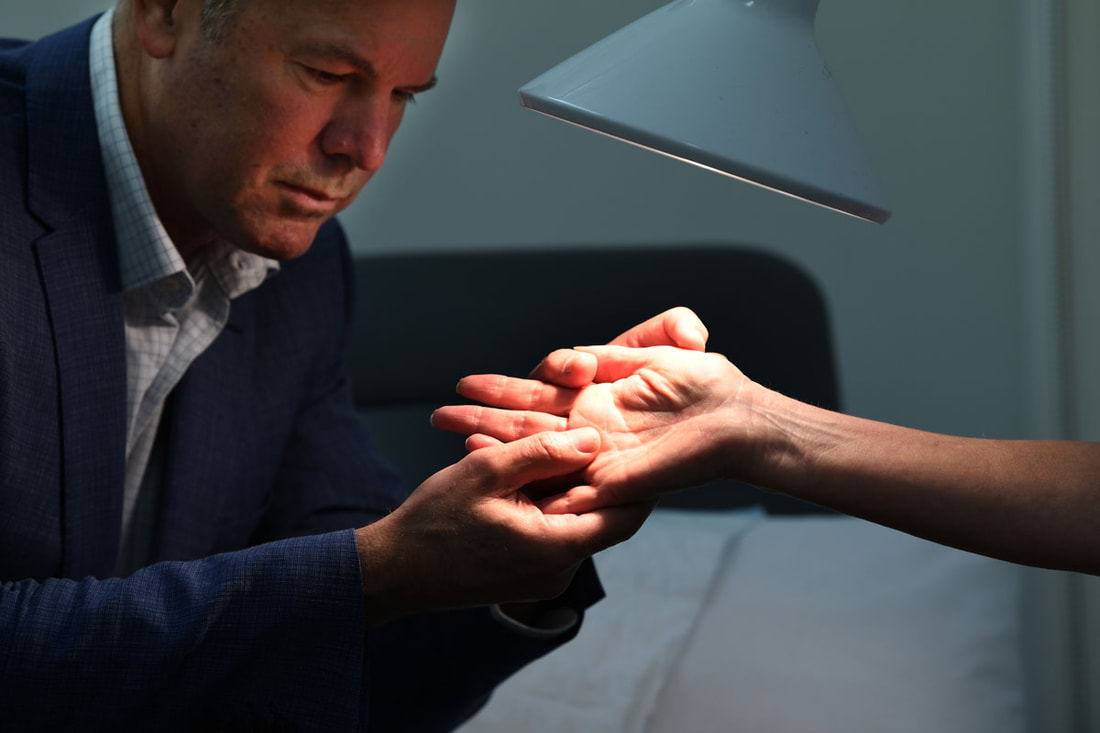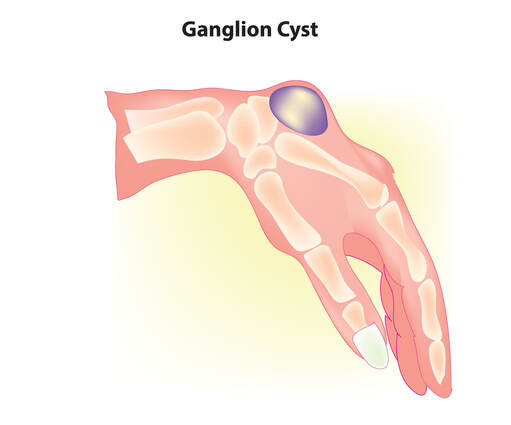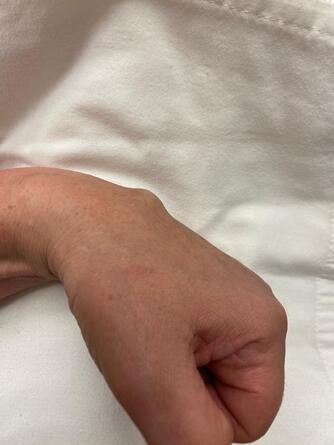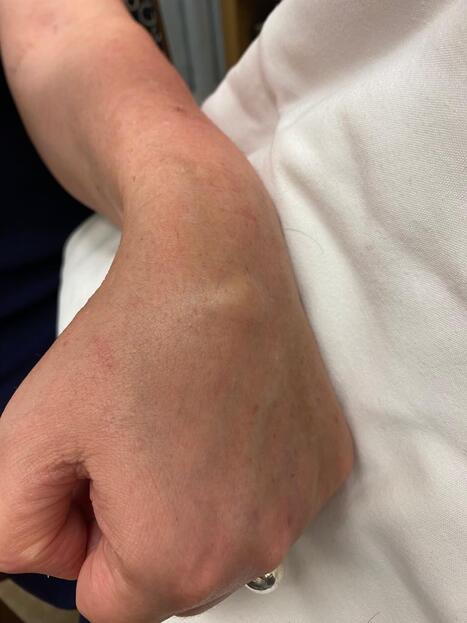Above image not a patient.
Dr Lewis Blennerhassett - Hand Surgeon Perth
|
What is a Ganglion?
They are fluid or synovial fluid-filled sacs commonly around the hand and wrist. They can also occur elsewhere in the body. In hands and wrists, they are commonly situated either on the dorsum (back) of the wrist or on the volar (front) aspect of the wrist. They can also occur in the fingers. These fluid-filled sacs are not dangerous in any way and in many cases can be present in a very small size and not be detected at all. If, however, they are painful then they can be removed. Sometimes they are also removed because they become noticeable from a cosmetic point of view. |
What is Ganglion Removal Surgery?
Ganglion removal from either the front or back of the wrist is usually done under general anaesthetic as a day case.
The risks are small, however, it is important to understand that any surgery involving the hand and wrist will require a period of time when the hand is not at its most functional. Generally it will take 4-6 weeks and sometimes longer before the hand and wrist can be used in a normal capacity. It’s likely that the hand and wrist can be used for light activities much sooner than this, however, if heavy loads or heavy physical exercise is required, this can take longer.
Ganglions may also occur on the fingers and recovery is generally a little faster than the recovery from a wrist ganglion procedure. Finger ganglions can often be removed under local anaesthetic (patient awake).
Ganglion removal from either the front or back of the wrist is usually done under general anaesthetic as a day case.
The risks are small, however, it is important to understand that any surgery involving the hand and wrist will require a period of time when the hand is not at its most functional. Generally it will take 4-6 weeks and sometimes longer before the hand and wrist can be used in a normal capacity. It’s likely that the hand and wrist can be used for light activities much sooner than this, however, if heavy loads or heavy physical exercise is required, this can take longer.
Ganglions may also occur on the fingers and recovery is generally a little faster than the recovery from a wrist ganglion procedure. Finger ganglions can often be removed under local anaesthetic (patient awake).
Ganglion Aftercare
After your surgery, you will have a bandage on your hand and/or wrist immediately post-operatively. This will be reviewed in the week following the surgery, at which time it is likely that the bandage will be removed and we will check your wound to make sure it is healing satisfactorily. Dressings changes are carried out by our highly experienced nurses.
You will be given instructions at that time on how to best mobilise your hand and wrist and, if necessary, a referral to a qualified hand therapist will be made. We are fortunate to have hand therapists based in our rooms and ,if necessary, they will be involved in your post-operative treatment.
Your second visit is likely to be approximately 2 weeks after the surgery, at which time we will once again check your wound for healing and give further instructions on your post-operative management.
Commonly used terms – wrist bumps, wrist lumps, dorsal root ganglion, volar root ganglion, synovial cyst
After your surgery, you will have a bandage on your hand and/or wrist immediately post-operatively. This will be reviewed in the week following the surgery, at which time it is likely that the bandage will be removed and we will check your wound to make sure it is healing satisfactorily. Dressings changes are carried out by our highly experienced nurses.
You will be given instructions at that time on how to best mobilise your hand and wrist and, if necessary, a referral to a qualified hand therapist will be made. We are fortunate to have hand therapists based in our rooms and ,if necessary, they will be involved in your post-operative treatment.
Your second visit is likely to be approximately 2 weeks after the surgery, at which time we will once again check your wound for healing and give further instructions on your post-operative management.
Commonly used terms – wrist bumps, wrist lumps, dorsal root ganglion, volar root ganglion, synovial cyst
Hand Surgeon - Dr Lewis Blennerhassett
Dr Lewis Blennerhassett is a leading Perth hand surgeon skilled in treating both adults and children. He has more than 25 years experience in a vast range of hand surgical procedures, including hand nerve, tendon, ligament and bone injury repair.
Trained extensively in hand surgery – including a period training and working in Boston, USA - he now teaches other surgeons.
Dr Blennerhassett’s reconstructive skills from his additional plastic surgery training ensure that his hand surgery is focused on being meticulous and precise. Expert care is provided, prioritising safety and quality.
Over the past two decades, he has worked at Perth’s major teaching hospitals, often on call 24/7 to surgically repair hand injuries from trauma, accidents and sporting mishaps.
For appointment bookings - Please phone Tara, Domenica or Paula on 08 9381 6977
*Follow Dr Lewis Blennerhassett on Instagram - @perthhandsurgeon
Dr Lewis Blennerhassett is a leading Perth hand surgeon skilled in treating both adults and children. He has more than 25 years experience in a vast range of hand surgical procedures, including hand nerve, tendon, ligament and bone injury repair.
Trained extensively in hand surgery – including a period training and working in Boston, USA - he now teaches other surgeons.
Dr Blennerhassett’s reconstructive skills from his additional plastic surgery training ensure that his hand surgery is focused on being meticulous and precise. Expert care is provided, prioritising safety and quality.
Over the past two decades, he has worked at Perth’s major teaching hospitals, often on call 24/7 to surgically repair hand injuries from trauma, accidents and sporting mishaps.
For appointment bookings - Please phone Tara, Domenica or Paula on 08 9381 6977
*Follow Dr Lewis Blennerhassett on Instagram - @perthhandsurgeon




